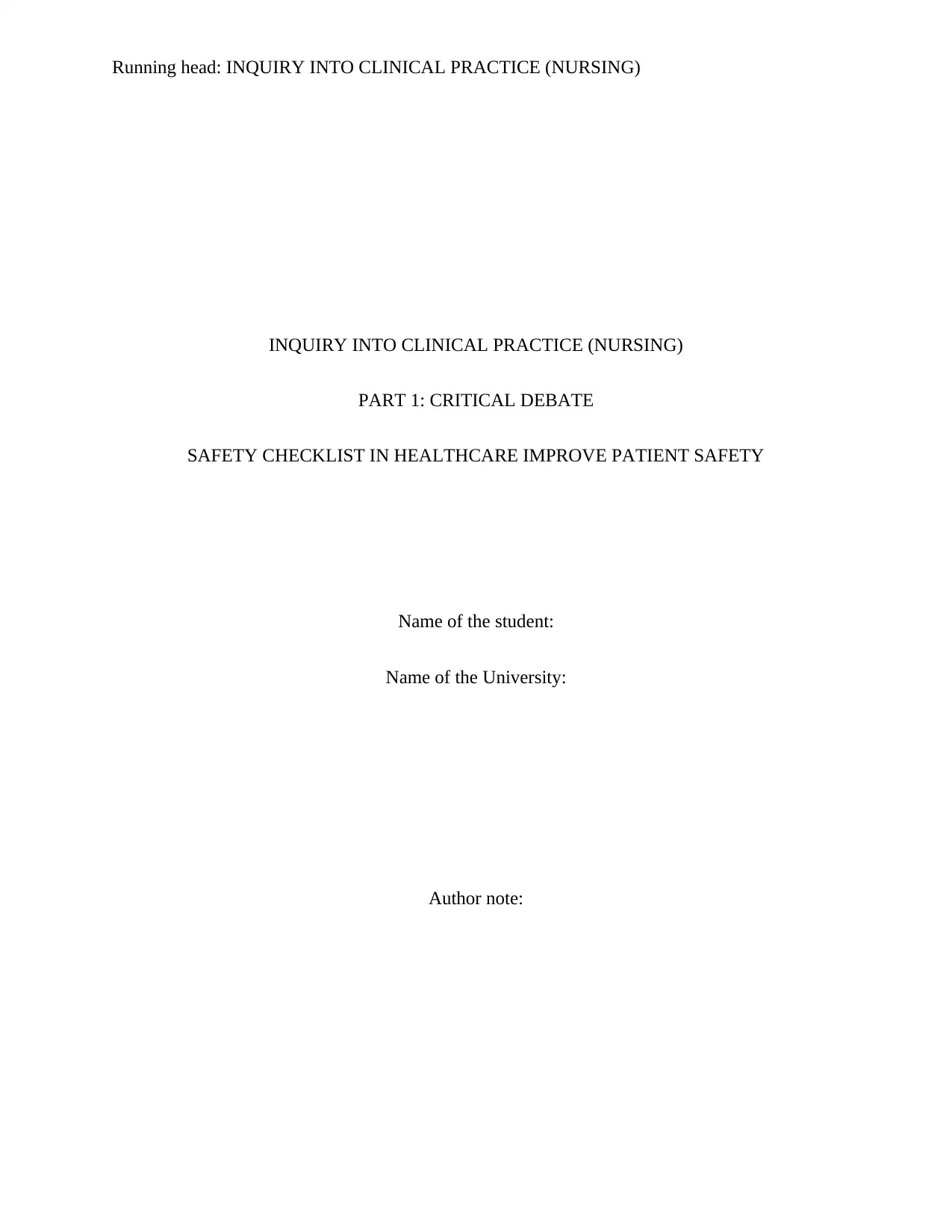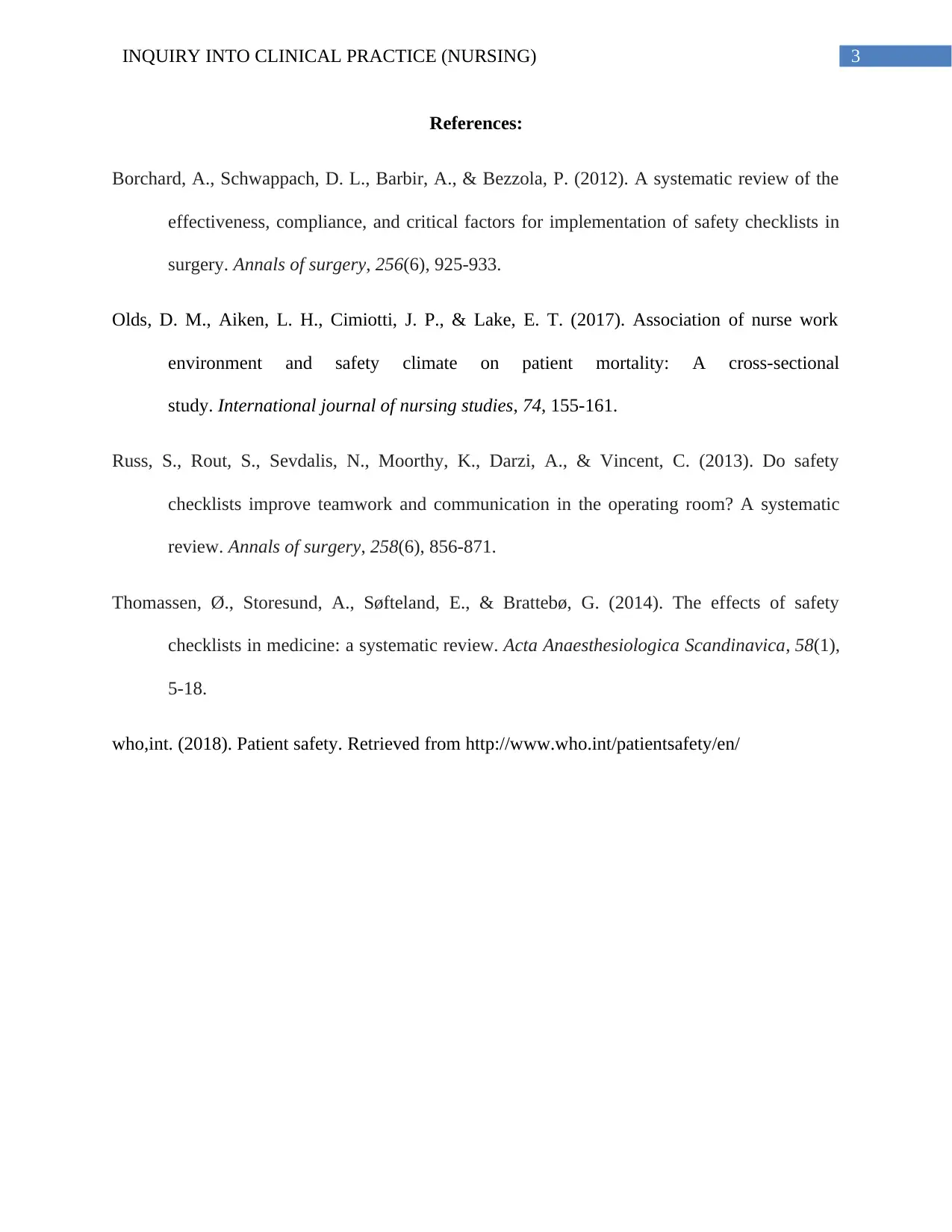NSB203 - Inquiry: How Safety Checklists Improve Patient Safety
VerifiedAdded on 2023/06/09
|4
|901
|112
Essay
AI Summary
This essay critically examines the role of safety checklists in improving patient safety within healthcare settings. It highlights the World Health Organization's emphasis on preventing unnecessary harm to patients and acknowledges the inherent risks in care processes. The essay presents safety checklists as a valuable tool for reducing medical errors, improving communication, and ensuring consistent processes. It references studies and surveys indicating the widespread adoption and perceived benefits of safety checklists among healthcare professionals, including improved patient transfer and discharge processes, increased self-confidence among professionals, and better patient-physician relationships. The essay concludes that safety checklists are a free and effective resource for healthcare organizations to enhance service quality, avoid errors, and ensure patient safety.
1 out of 4









![[object Object]](/_next/static/media/star-bottom.7253800d.svg)